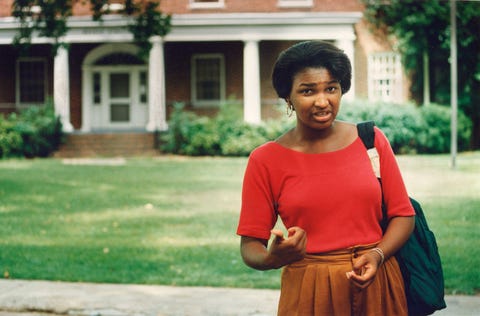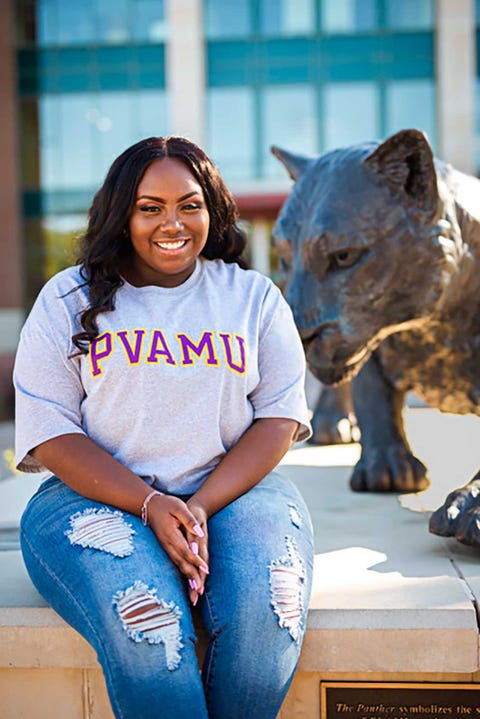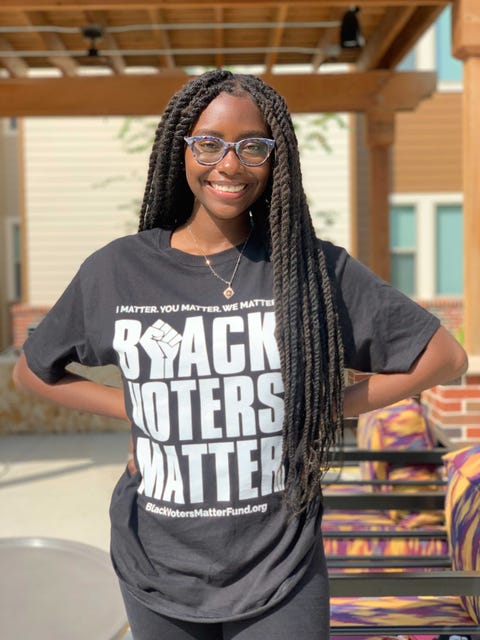The route to work is always the same. Leave the highway and turn right on Sandra Bland Parkway. Follow it to its end, past the location where a state trooper stopped
Bland’s car—the confrontation that would lead to her arrest and ultimately her death—and drive onto the campus of Texas’s Prairie View A&M University, one of 101 historically Black colleges and universities, or HBCUs. Once there, I see what Bland must have seen on her first day of college, and what I saw on the first day of mine nearly 30 years ago: a beautiful campus with lush oaks and stately buildings that tell the story of a people whose freedom has been forged in the face of injustice and whose joy is political resistance.
Every time I make this drive, now as a professor, I am reminded that the first thing our ancestors did when they were emancipated was erect institutions of higher learning. These campuses house and nurture their most important legacy—the committed pursuit of knowledge and freedom, first imagined and then made real for our children. HBCUs remind us all that Black ingenuity is more resilient than white supremacy.
But today, many of these colleges are woefully under-resourced, having experienced the steepest declines in federal funding per student between 2003 and 2015. They are often ignored by the big philanthropic donors; their endowments are 70 percent smaller than those of non-HBCUs. All of this, despite the work they do to change the intellectual and financial trajectory of their students, who are often underserved in K–12 schools. HBCUs represent 3 percent of the nation’s colleges, but graduate about 20 percent of all Black undergrads, and 25 percent of those with STEM degrees. Nearly 75 percent of HBCU students are eligible for Pell Grants, and over half are first-generation college students—yet HBCUs are better at retaining this population than non-HBCUs.

In recent months, the nation has finally turned its attention to HBCUs and their critical importance in society. In part, that is because of the role HBCU graduates played in the 2020 election. Kamala Harris is now the nation’s first Black vice president. She also ticks a lot of other boxes as the first woman, first South Asian, and first graduate of an HBCU—Howard University—to serve in the role. In a moment where we are renegotiating the meaning of race in our society, HBCU graduates, particularly Black women, have emerged with the answers and as the answers.
Fair Fight founder and Spelman College alum Stacey Abrams’s strategic efforts to turn Georgia blue challenged the Republicans’ stranglehold on the Senate. Keisha Lance Bottoms, mayor of Atlanta and a graduate of Florida A&M University, played a key part in the Biden-Harris victory with an early endorsement of Biden and her role as a campaign surrogate. Additionally, if former president Donald Trump is brought to justice in any form, it will likely be under the leadership of New York Attorney General Letitia James, who, like Vice President Harris, earned a degree from Howard.
Indeed, one of the most important political stories of 2020 is how Black women who graduated from Black colleges are changing everyone’s understanding of innovative political leadership. These women committed their time, money, and talent to resoundingly rebuke the Trump administration and affirm their value as candidates and in the rooms where campaign strategy is decided. And there are more of them who will emerge as leaders. I know, because I teach them every day.

Prairie View A&M University is an HBCU that sits on the site of a former plantation northwest of Houston. Like many land grant institutions that were created in the shadow of enslavement and segregation, Prairie View was established to educate Black students in the agricultural and mechanical trades. Today, it is one of the top producers of Black engineers and architects, and it supplies the state with a large number of Black nurses, teachers, and future medical doctors. It has outlived Jim Crow and two world wars, and it is now weathering a global pandemic, financial hardship, and a season of protest simultaneously.
The students here have also spent the last five decades organizing, demonstrating, and litigating against persistent efforts by local county officials to suppress their vote. There has been a Supreme Court case, false indictments, and miles of protest marches, and still, the county refuses to accept the students as legitimate residents, despite the fact that the college has been here for 145 years.
At the center of our current protests and court cases are Jayla Allen and Maia Young, two recent alums who allow us to witness the future impact that women from HBCUs will have. While most students were enjoying their first semester of college and excited about registering to vote, Jayla Allen was becoming a precinct chair and advocating for fair election policy for her fellow students. When the county decided to severely restrict access to early voting, the students sued, and Jayla became the lead litigant in Allen v. Waller. She testified at a Congressional hearing and in court about how she and her classmates were treated. Maia Young also became a student political leader early in her time on campus. She was testifying in court while serving as campaign cochair for her classmate Nathan Alexander III, who made a successful bid for Prairie View City Council. Jayla and Maia are both 21. Knowing them makes me hopeful about the future.

It has become quite commonplace to discount young people as apathetic and HBCUs as relics of a different era, but Kamala, Stacey, Keisha, Letitia, Jayla, and Maia remind us all that the legacy of HBCUs is to teach our nation what it means to expand the meaning of the values enshrined in the Constitution. They are the inheritors of the work of Ida B. Wells, Johnetta B. Cole, Ella Baker, and Diane Nash. They are living proof that HBCU students’ dreams of freedom did not die when the civil rights movement waned. HBCUs kept educating the sons and daughters of former slaves and encouraging their patriotic right to challenge institutions that did not include them.
HBCUs are incubators for Black leaders because they give students spaces to explore all aspects of themselves, away from racial judgments and stereotypes. Here, Black students can make mistakes and challenge authority while pledging sororities and working in student government, and no one questions the role of race in their success, because there is no doubt that Blacks can be high-achieving. There are no accusations of affirmative action and tokenism in admissions. And if we want to continue to rely on Black women to save America from its worst impulses, we must be committed to sustaining the HBCUs that serve as their training ground.
